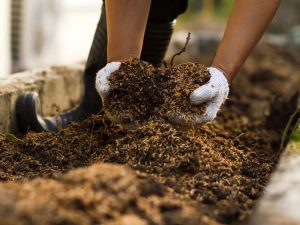Biodegradable Cotton: Nature’s Sustainable Solution – Part Two
Brazilian cotton |
Welcome back! In Part One of this series, we discussed the biodegradability of cotton and compared it to other fabrications. Cotton, a natural fiber derived from plants, biodegrades much more rapidly than synthetic fibers. Most notably, polyester can take more than 200 years to biodegrade. This extended time frame sharply contrasts with cotton’s biodegradability. Cotton takes between five days and five months to biodegrade, and there are a few things that influence this.
In this article, we will examine the impact of finishes and treatments on cotton’s ability to break down and the influence of the environment in which it decomposes.
The Influence of Finishes on the Biodegradation of Cotton
Finishes, or treatments, such as softeners and wrinkle reducers, as well as dyes, inherently affect the biodegradability and sustainability of cotton.
A study conducted by CottonInc compared cotton with a range of finishes and treatments in a few environments. The study concluded that despite the finishes, every type of cotton tested “biodegrades readily while synthetic materials do not.” However, the rate at which it biodegrades was affected.
The Rate Cotton Biodegrades Based on the Finishes

Cotton treated with softener or bleaching agents breaks down the fastest, according to CottonInc’s study conducted in commercial compost facilities, natural soil, and wastewater conditions. This accelerated breakdown can be attributed to the nature of the treatments, which work to break down the fiber before disposal to achieve the desired hand feel.
Following cotton with softener, cotton with no finish and water-repellent treated cotton biodegrades at similar rates, followed by cotton with chemical dyes. Lastly, anti-shrinkage and anti-wrinkle treatments were the slowest to break down; however, they still biodegrade at a much more rapid rate compared to polyester (CottonWorks).
As noted by GreenCitizen, “cotton’s biodegradability is a natural part of its lifecycle as a plant.” Although treatments and finishes affect the rate of biodegradability, “cotton can still break down and return to the earth, given the right conditions.” The conditions or environment impact how biodegradable the fiber is.
The Influence of Environment on Cotton’s Ability to Breakdown
When examining the right conditions, we can review landfills, compost heaps, and natural environments.
In landfills, organic matter “undergoes anaerobic decomposition”, meaning it breaks down without the presence of oxygen and in turn, produces methane (GreenCitizen). Methane is often referred to as a greenhouse gas and is considered a hazardous air pollutant if not properly captured for energy use.
A much more efficient yet specific route is composting.

In compost heaps, aerobic decomposition, or breaking down with the presence of oxygen, occurs (GreenCitizen). This allows the nutrients of the decomposed matter to be reintegrated into the soil, enriching it and “aiding in the growth of new plants.” (Cotton Leads). It’s important to consider the dyes and chemical treatments on the cotton as they will also be returned to the earth and soil.
In the CottonInc study previously mentioned, cotton’s biodegradability insurmountably exceeds that of synthetics by 99% in a compost environment and 95% in water.
In natural environments, factors such as water content, temperature, and microbial activity play crucial roles in determining the rate at which cotton breaks down (GreenCitizen). As seen below, cotton breaks down entirely over time in an open-air natural environment, while synthetic fabrications do not.

Not only does cotton break down, but it also has the potential to positively impact the environment when properly disposed of or composted. It reduces landfill waste, returns resources back to the earth and even enriches the soil for further future growth (GreenCitizen).
As you can see, cotton’s remarkable ability to break down naturally, regardless of treatments and environmental conditions, is a big win for the planet.
Sources:
Biodegradability of Cotton – CottonWorks
Impact of dyes and finishes on the aquatic biodegradability of cotton textile fibers – ScienceDirect
Is Cotton Biodegradable? – Green Citizen
Cotton’s Life Cycle and Natural Biodegradability – Cotton Leads
